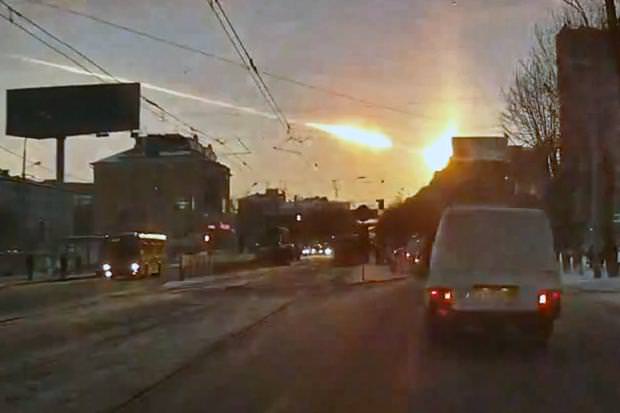The meteor that streaked over the skies of Russia -- creating a shockwave that shattered windows, injuring upwards of 1,000 people -- is not related to the asteroid that will whiz past Earth later today, (Feb.15), NASA has confirmed.
As many of our readers have noted in comments on our
previous story
on the Russian meteor, the trajectory of the Russian meteorite was significantly different than the trajectory of the asteroid 2012 DA14, making it a completely unrelated object.
"Information is still being collected about the Russian meteorite and analysis is preliminary at this point," NASA said in a
statement
. "In videos of the meteor, it is seen to pass from left to right in front of the rising sun, which means it was traveling from north to south. Asteroid DA14's trajectory is in the opposite direction, from south to north."
Images and video of the Russian bolide taken from satellites in Earth orbit confirm the trajectory:
[caption id="attachment_100005" align="aligncenter" width="580"]
An image from the SEVIRI instrument aboard the Meteosat-10 geostationary satellite. The vapor trail left by the meteor that was seen near Chelyabinsk in Russia on 15th February 2013 is visible in the center of the image. Original data Copyright EUMETSAT 2013[/caption]
Reports are still coming in, but perhaps more than 1,000 people were injured, according to a statement from the Russian Emergency Ministry, primarily by glass cuts when windows were shattered from the shockwave blast. The vapor trail of the meteor was visible before the blast, so many people were standing in front of windows, looking at the trail visible across the sky.
The meteor appeared in the skies at around 09:25 a.m. local time in the Chelyabinsk region, near the southern Ural Mountains. It disintegrated and 'exploded' about 30-50 kilometers above Earth's surface. The fireball blinded drivers and a subsequent explosion blew out windows. Reports of damaged buildings are being checked.
Initial estimates for the Russian Meteor are that it was a 1.5 meter-wide object weighing about 10 tons, traveling at 15 km/s.
[caption id="attachment_100006" align="aligncenter" width="580"]
Meteosat-10 image of Meteoroid trail aligned border with Kazakhstan in Google Maps. Credit: Paul Attivissimo[/caption]
Nature News
is reporting that this morning was the largest recorded object to strike the Earth in more than a century. "Infrasound data collected by a network designed to watch for nuclear weapons testing suggests that today's blast released hundreds of kilotonnes of energy. That would make it far more powerful than the nuclear weapon tested by North Korea just days ago and the largest rock crashing on the planet since a meteor broke up over Siberia's Tunguska river in 1908<" Nature News said.
[caption id="attachment_100015" align="aligncenter" width="580"]
Satellite images from the European MET-7 weather satellite. Credit: EUMETSAT. [/caption]
We'll continue to provide updates on this story as they become available.
 Universe Today
Universe Today
